Trying not to make Amazon my default. Found a watch I was looking for at JCPenney. Price was right, add a few other Christmas odds and ends to get free shipping, place the order. Two days later told watch out of stock, 2 other items delayed possibly til after Christmas. Watch still says in stock…
I bought a smart humidifier and it rules. Integration with Google Home is nice, get full control of humidity level, lights, and sound on my Google Home. And way more responsive to voice commands than my old Philips Hue lights.
One of my favorite things from this year was getting an old Canon 50mm f1.2 LTM lens. This is an old one that was used on Canon rangefinders in the 50s and 60s. It’s compact, all metal, and delightfully soft and glowing wide open. Pairs great on my Sony A7R2.


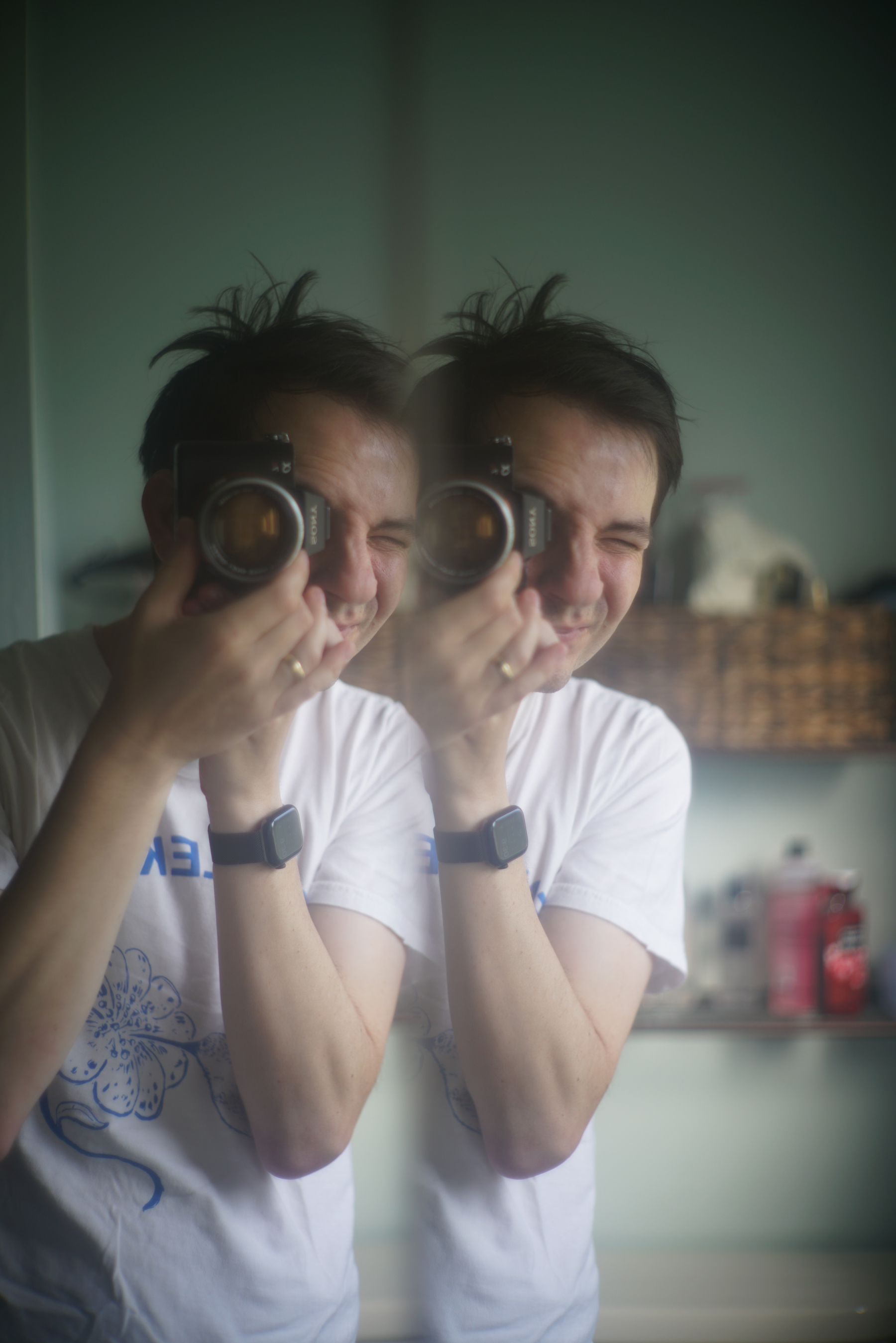

Yes, your teen social media ban that doesn’t ban Discord, Roblox, or most encrypted messaging services will be very successful
The most striking thing about the Pebble Index is that it feels deeply personal. In that, Eric Migicovsky wanted to have this device in the world, he has a use case for it. I don’t know if that will make it a success, but what’s the last gadget that felt like one person’s specific idea?
The Pebble Index 01 is a Throwback to the Age of Weird Tech
This episode of Version History got me looking back at 2012 and realizing what a wonderfully weird time it was for gadgets. Modern smartphones were only about 5 years old, and companies took that opportunity to try out all sorts of weird tech. Most of it wasn’t that good, but it was interesting. We’re firmly out of that era now. We’ve realized that apps on a smartphone kind of do most things; we’ve figured out what wearables look like and can do; it’s a cycle of iteration around fixed-category ideas.
So when a weird gadget comes out now, I still get excited. Enter the Pebble Index 01. I mean, outside of the new product, it’s a new product from Pebble, a company that was acquired by Google. Now reemerged, selling new-old stock watches, I wasn’t expecting something out of left field. Yet we have a genuinely weird smart ring.
What’s so weird about it?
1. It’s a smart ring with no fitness features
The smart ring market has been growing steadily, but still doesn’t feel mainstream. It’s popular with athletes and the fitness-body quantification types. And for people who want to regularly wear non-smartwatches without losing some body metrics. But it’s not the most significant market to begin with. My parents know smartwatches exist, but I don’t think they’ve heard of smart rings. That’s my rubric anyway.
But Oura and Samsung have clearly staked out that a smart ring needs to be about health tracking. The Index is a much simpler device. It has a button and a microphone. It’s designed to seamlessly take voice notes. That’s it. That is very weird. There is a large “second brain” community online that builds fantastic mind-mapping systems in Notion or Obsidian. I imagine this appeals to that crowd.
2. It’s non-rechargeable
That’s right, this is designed to be an ultra-low power device that can last for years on a charge. But when the battery goes flat, it is garbage. That’s a weird design choice. Now, every smart ring is unrepairable to begin with (to say nothing of most smartwatches until recently). So, Pebble is not being a particularly bad actor in the market when it comes to longevity. Still, it is a deeply weird move to explicitly design disposable tech. In some ways, it is more transparent than a lot of other device makers, which make devices with batteries that effectively can’t be replaced. Those too are designed to be thrown out. Pebble is just saying the quiet part out loud. And Pebble chief Eric Migicovsky said it will offer a recycling program.
This is still a deeply weird design choice.
3. No subscription
Pebble is selling a device with the Index 01, not specifically a platform. That means you get full functionality for the life of the device (which we’ve already established is very much fixed) at the purchase price. Pebble is quick to differentiate this from other smart rings. But the functionality is so distinct, the comparison rings (folks) a little hollow. A smartwatch can take voice notes all day without a subscription. And it offers you a display, a speaker, the ability to send and receive information.
4. It’s open source
Because the ring syncs through the Pebble app, which is open source, there are many potential integrations the company highlighted in its launch post. Essentially, you could pair the voice input and button interaction with anything. One button press to do a voice memo. Two presses to do a ChatGPT search. You could have the button trigger something entirely outside of voice apps. It’s a limited set of possibilities, and someone actually has to go out and build them. But there are some weird, if interesting possibilities. Likely none of them will ship with the device, but if the history of Pebble has shown anything, they can cultivate a fervent fanbase.
What is this thing?
Because Pebble is now entirely under Migicovsky’s aegis again, I think this device deeply appeals to him. He owns a wearable company; he has the right to try to sell a wearable that directly appeals to himself. As much as a “second brain” device, this is also in the class of a remedy for distracting screens. Just like dumb phones, Boox Palmas, and other such devices, they offer the tantalzing possibility to be more “in the moment” with your life. A laudable goal. Pebble rightly points out in it’s launch post that to do this, it needs to work every time, because one failed note will send you right back to your phone. I like that the Index can do some limited recording even if it loses connection, and then sync back later. And I like that it will sync with your phone to let you see your notes and recordings. Little things like that give me hope it could work.But I also think this is the start of Pebble own kind of lo-fi ecosystem. There’s a vision here. It’s kind of disaggregating some of the functions of the phone into limited devices that do less with much better battery life, while still punting back to the phone for connectivity and processing grunt. This isn’t Pebble’s first attempt at this. Is the next step another try at the Pebble Core? I believe it was only ever announced, but the Core was another step in this disaggregation. It was a 3G connectivity puck that could stream music and track GPS, designed to let you leave the house with your watch with minimal compromises. The Index is a much more humble device, but it speaks to the same ambition.
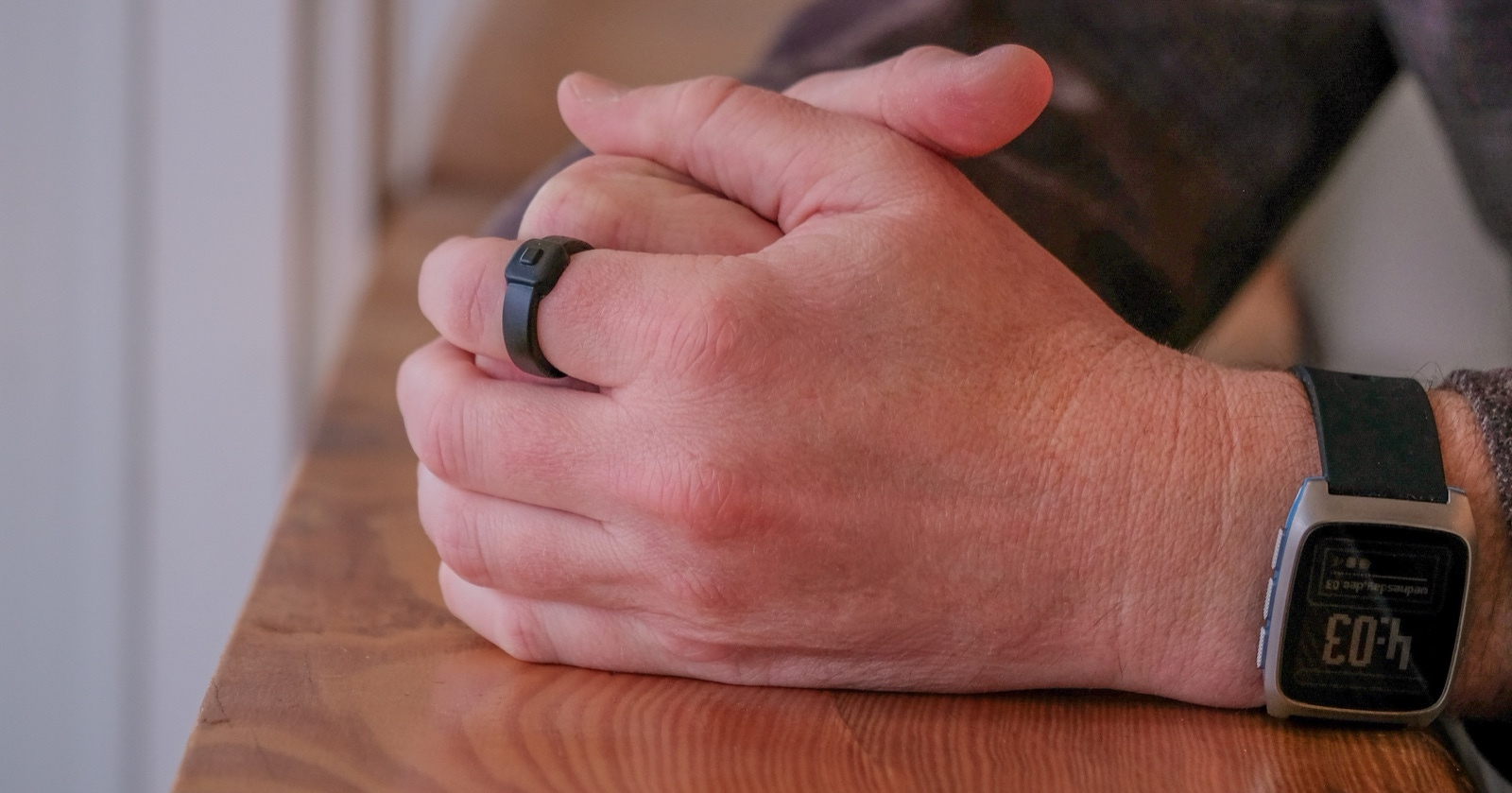
Recently got to talk about my experience running Ubuntu on an OG Surface Go. TL;DW: surprisingly good, Linux can still be a little clunky, but LLMs make CLI stuff way less intimidating for newbies www.youtube.com/watch
Switching to my Keychron K2 HE, my first time going to a 75% layout, outside of a laptop. Mostly a smooth transition, other than occasionally reaching for the numpad. Biggest thing, I guess I never realized how often I use the Delete key. Luckily, can remap “page up” to match my muscle memory.
A Software-Defined Mechanical Keyboard
My Logitech MX Keys was starting to get a little flaky, so I decided to splurge on a new keyboard. I’ve always kind of hated the MX Keys, it’s too flat, the battery life is just long enough to be frustrating when I need to charge it, and the backlight would randomly pulse in the middle of the night if I left it on. It was functional, but joyless. Also it came with the MX Master 3 Mouse, which is superb.
So this sent me back to the world of mechanical keyboards. I had one when I worked at Gestalt IT, but when I started working from home, I was told the MX Cherry Brown switches were not appreciated. That keyboard was poorly constructed and super clacky, so I get it. Hence the MX Keys.
But mechanical keyboards have gotten a little more manageable on the sound front with dampening, gaskets, and such, so I decided to go for one again. I was immediately drawn to the Keychron K2 HE, because it pretty.
The HE in the product name stands for “Hall Effect,” something that wasn’t around the last time I was in the keyboard market. It refers to the switches that rely on magnets for actuation rather than a pin making contact with a PCB. Basically, in regular mechanical keyboard switches, each switch has two properties: the force required to press the key and the distance the switch must travel to register a key press. There are other properties, like whether the switch provides tactile or audible feedback on activation. These properties are generally fixed with the switch (I think there are a few clicky switches where you can remove the click). While hot-swappable switches are now fairly common (they used to be soldered to the PCBs), switching them out still requires significant effort and expense. Although anyone into the hobby will tell you that’s half the fun.
Where Hall Effect switches are different is that only the activation force is fixed in the switch. The activation point is entirely determined by software. That’s because the keyboard can detect how far the magnet in each switch is away from the board all the time, as opposed to a mechanical switch where the board is blind until it’s activated. So in software, you can define at what point the switch activates. This also means that there is no mechanical “reset point” you need to hit before the switch can activate again. You can set it so that as soon as the key starts to retract from an activation, it can be activated again. And each switch can be set individually, no need for one-size-fits-all.
Most of this tech is designed for gamers, where reaction time is key, to the point where some have called Hall Effect keyboards cheating. As a typing experience, they are enjoyable. The keys in my keyboard are quite springy, and the feeling is that they push back quite aggressively after you push them down. Although that just may be me being used to the MX Keys rather anemic typing experience.
I short, I got it because it looked pretty and I wanted to try out something that seemed genuinely interesting in keyboard tech. I want to see if any of the programmable key behavior can have uses beyond gaming. I’m interested that you can set different macros on each key depending on how far you press it. I’m not sure how I can use that, but it is genuinely interesting tech.
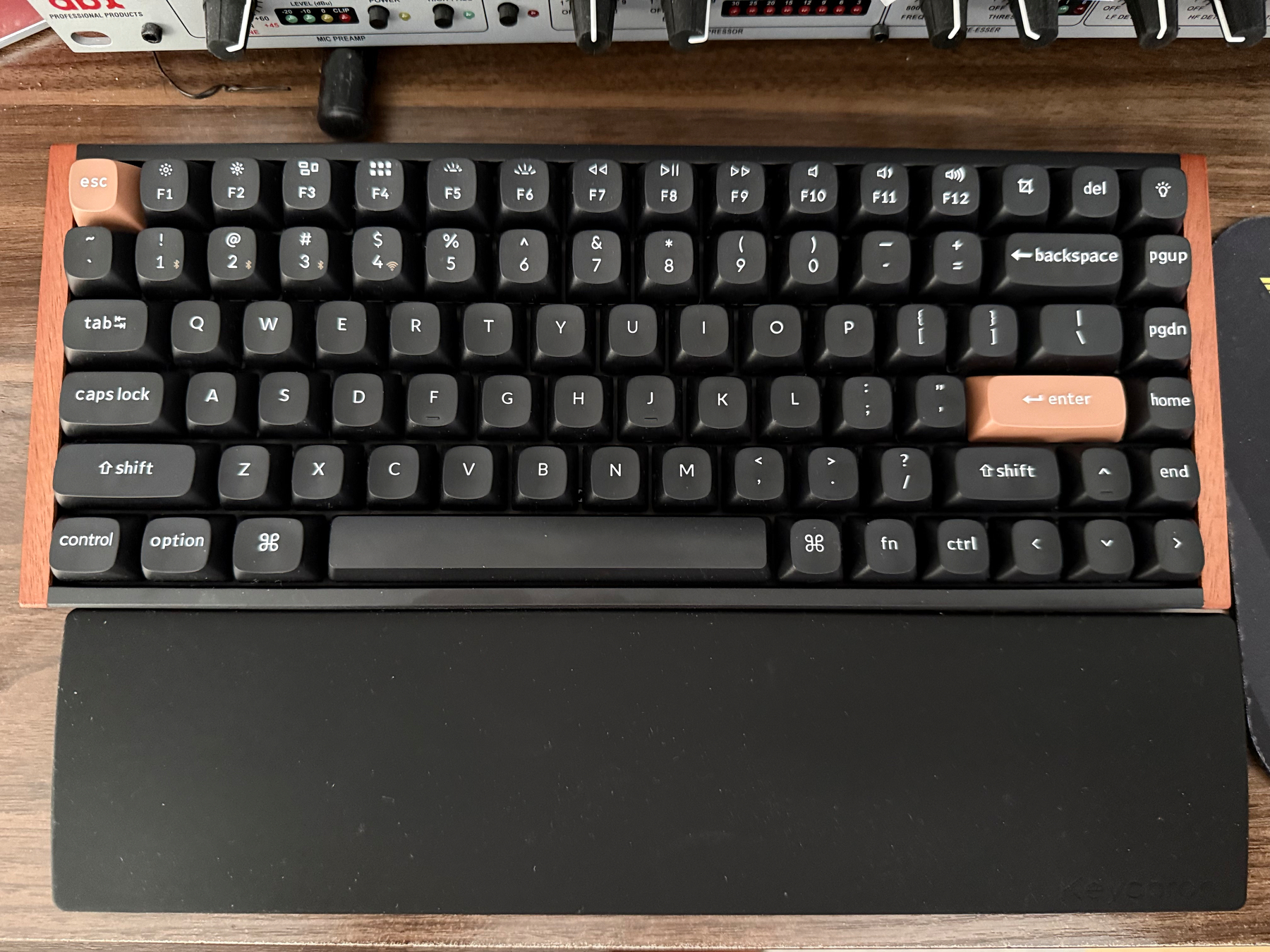
Running Ubuntu on a Surface Go
I just recorded for an upcoming episode of Live With It, talking about my experience runnning Ubuntu on an old Surface Go. I’ve always wanted to live the tiny laptop life (the 12-inch PowerBook G4, Toshiba Libretto, Sony Vaio P), but I never had the money to drop on something that was utterly impractical.
But I recently found a used OG Surface Go on Goodwill with the type cover and stylus for $80, so I pulled the trigger. Some thoughts after running it for a while.
The hardware is great
Completely undersold about this cheap little tablet is how nice the hardware is. The display is bright and crisp, the hinge is all metal and feels like it’ll take a beating. Even the type cover feels really nice. It is a nice device to interact with on a physical level, honestly a rarity in Windows world for me.
Watch out for BIOS
So when I bought this, I didn’t realize it had been used in a corporate deployment. Because all the boot settings were password locked. And after trying “root,” “admin,” and “password” I was out of ideas on how to unlock it. That is kind of a big problem, because all the guides to install Linux on a Surface device start with disabling secure boot in the BIOS. I thought I was going to be stuck running out of support Windows 10 on the Go. Luckily a helpful person on Reddit suggested I try Ventoy. This works a little different than typical ISO flashing apps work. It somehow let me do some of the intial setup from within Windows. I don’t know by what dark sorcery, but it worked to install Ubuntu.
Don’t go for the Gold
While the physical hardware is great on the Go, the specs limit what you can do with it. I specifically made sure I had the model with 8GB of RAM and faster 128GB SSD. But there’s no getting around the Intel Pentium Gold process in there. 2-cores, 4-threads, all pretty wimpy, and it can’t have seemed any better when this was new. It’s fine when I have a browser with 2-4 tabs open. But running Xournal, Firefox, and a mail client is enough to get the processor chugging. While it never gets hot, it can feel warm when you push it. I tried a light video editing app with some scanned Super8 footage. It was faster to scan the footage than to export it.
(Mostly) worked out of the box
I was shocked how well everything ran off a stock install. Sounds, Wi-Fi, graphics, touch screen, auto-rotation, pen input, it was all just there. The only thing that I knew would be an issue were the cameras. Even after following advice from the Surface Linux threads and asking Claude for some help, I couldn’t get them working. The way I use the tablet, this is no loss, but still annoying.
Fine battery
For an 8-year old tablet, the battery life is decent. Not multi-day forget about it good. But not, I’m rushing to an outlet every time I pick it up. Suspend works well so the battery doesn’t drain when I’m not using it. I probably get 4 hours of use, depending on how hard the CPU is chugging.
What am I using it for
Most for notes. Xournal is a great little app with pressure sensativity support. It’s no OneNote, but it works well with the hardware. It’s also a great YouTube machine when I want something a little bigger than my phone. And it’s kind of the ultimate kitchen PC. In plain tablet mode with no type cover, it’s perfect for sitting on the counter and displaying a recipe, doing quick conversions, those kind of things. Not earth shattering but way more convenient than using my phone. I just wish I could get Paprika on it.
Shooting old Sigma digital cameras with Foveon sensors is my closest digital equivalent to shooting film. You get a unique look, but the hardware makes it a pain to review images on camera or spray and pray shots. Like scanning film, you need to invest time in processing images in clunky software
The Fujifilm X half: The Case for Weirdness
As a photography enthusiast, its hard to admit that a new camera, especially from a brand you love, isn’t meant for you. But that’s exactly where I find myself with the new Fujifilm X half.

Fujifilm was an easy choice when I first wanted to get back into photography. I’m into film simulations. I like old school dials and the vintage aesthetic. So when I saw the X half, my first thought was: is this for me?
Weird in All the Right Ways
There’s a lot to like here. The metal body looks premium. The manual controls—aperture ring, focus tab, exposure comp dial—are spot-on. It even includes an optical viewfinder (OVF), which they didn’t need to include, but they did. These are all non-trivial touches to include.
But the name? Lowercase “h”? Odd.
And the specs? Straight up weird: a vertically oriented one-inch sensor, a tiny fixed lens that makes the forehead of the camera look awkwardly large, and a strangely implemented fake film advance lever that just creates diptychs. It’s quirky, and that’s what makes it interesting.
This is not a parts-bin camera cobbled together from older X models (hi Sony). Fujifilm put real R&D behind this. It’s a bold move in a world where a lot of companies put out a “blogger” camera to play it safe, repackaging tech for new SKUs and calling it innovation.
Not Made for Me, and That’s the Point
I recently picked up an Instax Evo, and while it’s fun, it’s more of a toy than a real camera. The build quality was meh and feels a bit hollow. The X half is more premium, but it still seems designed for someone chasing the aesthetic of film, not the experience.
And honestly, that’s okay.
Shooting film is a genuine pain. It’s expensive. And it’s slow. For someone who wants that look without the hassle, this camera might be perfect.
But for me it falls a little flat. If I’m going to carry around a digital point-and-shoot, I want a bigger sensor. Better low-light. A usable flash. Maybe more physical controls on the back. If it’s going to be digital, I want a good digital experience.
A Suddenly Competitive Space
For $850, the X-Half sits in a strange market space. On the one hand, it’s competing with used point-and-shoots that are getting trendier (and more expensive). On the other, it’s brushing up against Canon’s and Sony’s modern compact offerings that come with superior sensors, better lenses, real video capabilities, and far better flash options (the X half LED flash is just gross).
It even edges into Ricoh GR territory—where you can get APS-C sensors and real street photography cred. If you’re already spending nearly a thousand dollars on a camera, the leap to something more capable isn’t far.
So what’s the X half actually offering?
It’s Chasing Trends—and That’s Fine
Let’s not kid ourselves: the X half is trend-chasing. Film’s hot, compact cameras are trendy again, and the aesthetic-first shooter is a lucrative market. The faux “film roll” display on the back? Gimmick. The diptych function tied to the lever? Gimmick. The LED flash? Sadly, not even good enough to be a gimmick—it’s just bad.

But there’s nothing wrong with chasing trends. Fujifilm is a business, I don’t need them to pass a photography purity test. If this camera helps them continue making the things I love, excellent lenses, sensors, and traditional X models, then I’m here for it.
Final Thought: Weird Wins
Here’s what I do love about the Fujifilm X-Half: it exists. It’s weird. It’s clearly not built by committee. It isn’t safe, and it isn’t for everyone.
And in a shrinking digital camera market, that kind of creative risk is refreshing. It’s not for me, but that doesn’t mean I don’t appreciate what Fujifilm is trying to do.
In the end, we are better off with more weird cameras.
Recent pics from a walk with my Sigma DP1 Merrill. While the camera is mostly limited to the most optimal shooting conditions, I’ve really come to enjoy it.

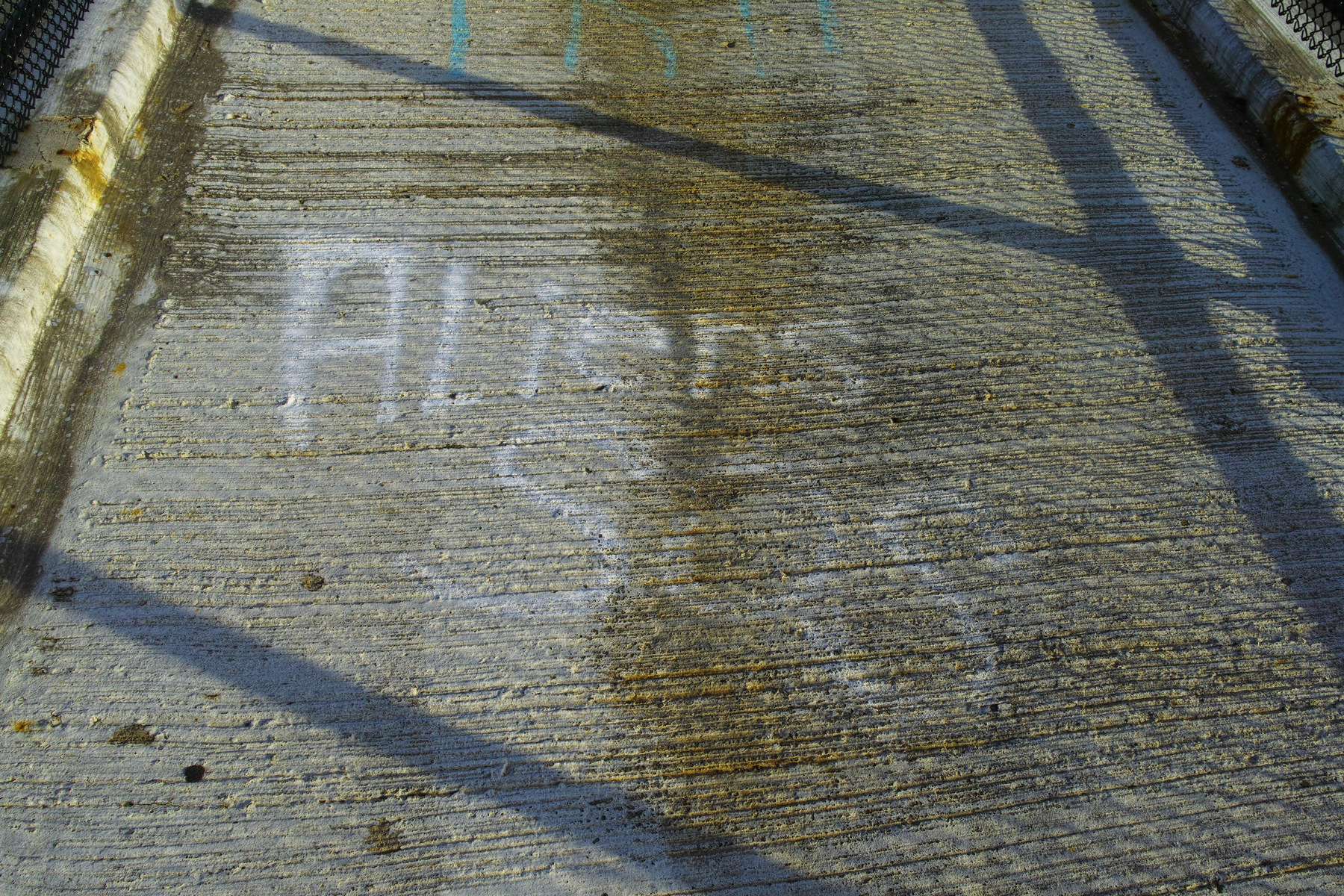
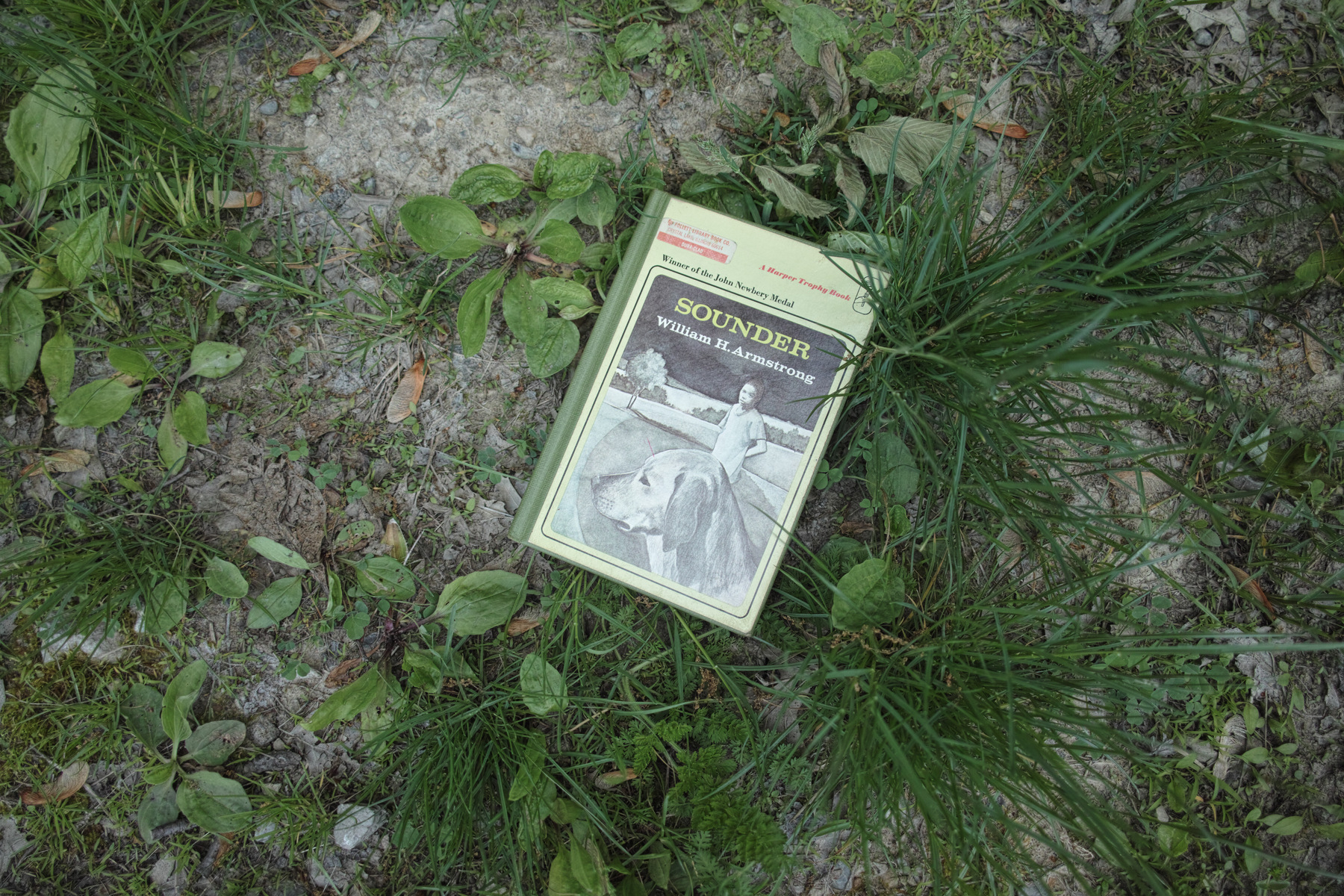
The 5x reach on the iPhone 16 Pro is nice to have

Tariffs and Film Photography
How will the upcoming tariffs impact film photography? It feels like we’re only about 5-6 years removed from every film manufacturer being on the brink of oblivion. I don’t have insight into the supply chains for any of these companies, so I’m mostly considering this on the consumer front.
Kodak being based in America likely means their prices shouldn’t shift too much? I don’t know how much of their revenue comes from outside the US, but I imagine it’s considerable. And almost certainly their raw materials are not entirely domestic. But their production and main film manufacturing is US-based. So I don’t think there will be a reflexive impulse to jack up prices more than they regularly go up to compensate.
Japan and the EU will see 24% and 20% tariffs, respectively. This means a significant jump in the cost of instant film from Polaroid (made in the Netherlands) and Fujifilm Instax. Any time there is a shakeup in this market, I get nervous for Polaroid, particularly. While they have the revenue to invest in some significant R&D, any price hike will likely make their film even more of a luxury. We’ll be looking at having to do bulk discounts just to stay around $2 a shot. Instax is a major money maker for Fujifilm and a bit more forgivingly priced. I imagine a 24% tariff reduces some volume but it can remain a bit more viable.
Fuji has already been signaling it’s not too committed to its traditional film lineup. Tariffs reducing that volume significantly in the US could put it to the point of being no longer feasible. Especially if Fuji 200 and 400 are suddenly at a price disadvantage to Gold and UltraMax.
Ilford might still be able to weather the storm in the US, facing “only” a 10% tariff from the UK. There is enough long-term loyalty to HP5 that even if priced the same at Tri-X, I don’t see the market going away. But Harman’s budget Kentmere and the Czech-based Foma brands could see any budget advantage largely dry up.
Still my favorite smartwatch
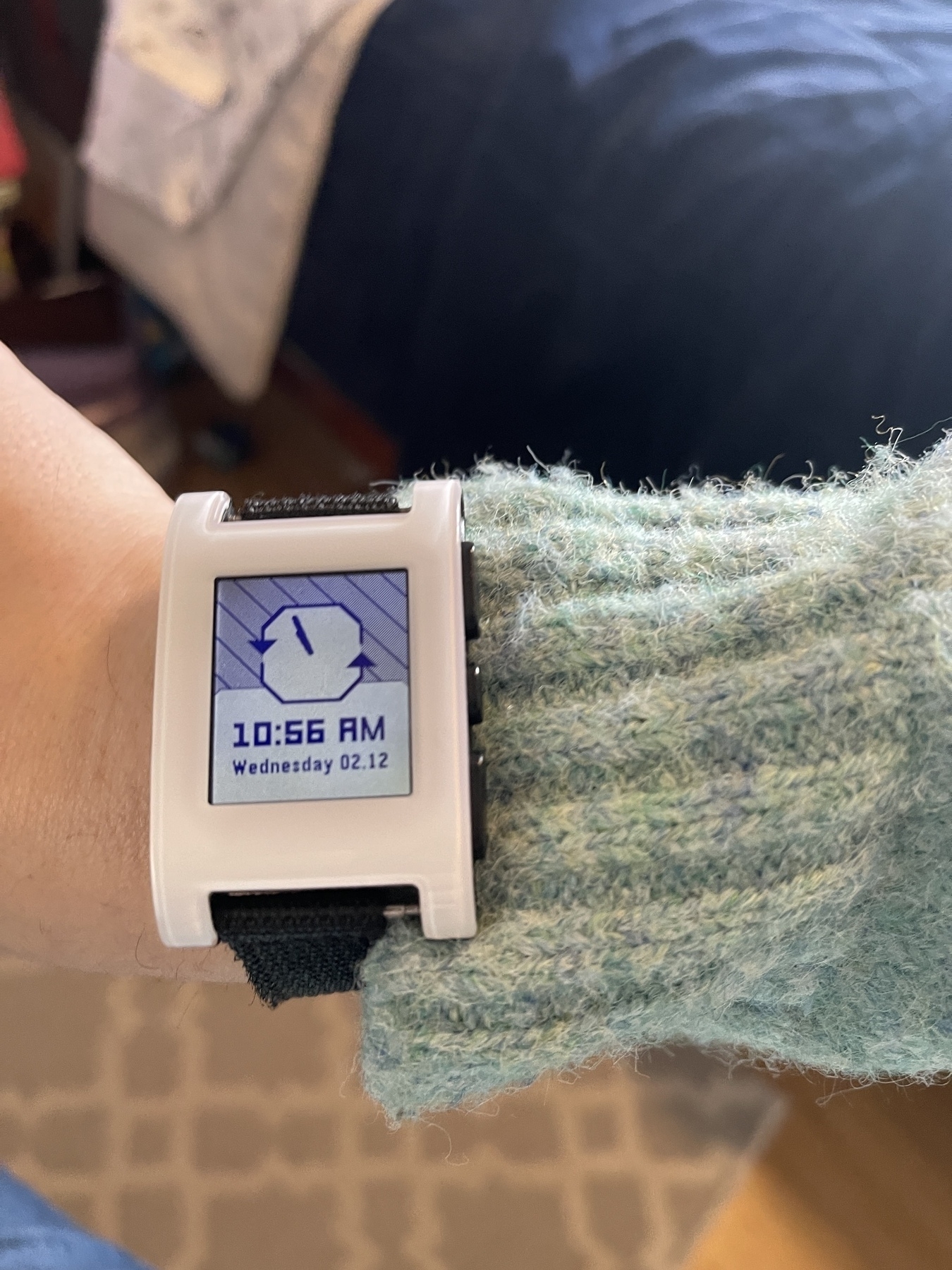
Some CISO Series Podcast titles that didn’t make the cut
- You’re saying “stand up straight” isn’t a posture management solution?
- I’m sorry “end-of-life” was too ambiguous for you
- There are no second acts in “end-of-life”
- CISA sold secure by design by the seashore
- Our privacy policy just says “lol”
What is the motivation for OEMs to make 3rd party Windows Link hardware? Even more than a Chromebook, this is designed to just connect to Windows cloud services. Where can you differentiate on hardware? www.theverge.com/2024/11/1…
Anyone I know using a Copilot+ PC? Just curious about the experience and what specific AI features you’re using
I had a pretty typical stress dream of being a DJ at WRUW and not being able to find any music to play. Then suddenly Tim Cook came down and I had to interview him on the fly while also trying to find music to play. Well done subconscious, I appreciate keeping it fresh.
When I was 11 I read the book Dragonwings and it took me half way until I realized this was definitely about the Chinese American experience and not a slow rolling fantasy novel
Whatever AI app can automatically organize the 15-25 TextEdit documents I have open at any given time will be the winner
The Teenage Engineering OP XY might get the hype, but way more excited for the Bastl Wizard. Looks like a super fun effect companion to a Pocket Operator setup. Getting patchable stereo effects at this price is so nice bastl-instruments.com/instrumen…
Openvibe seems like a good cross posting solution, but happy to keep paying for Microblog. After abandoning a platform, I like having something that’s “mine” to host my posts.
Found my vibe in the kindergarten art room
